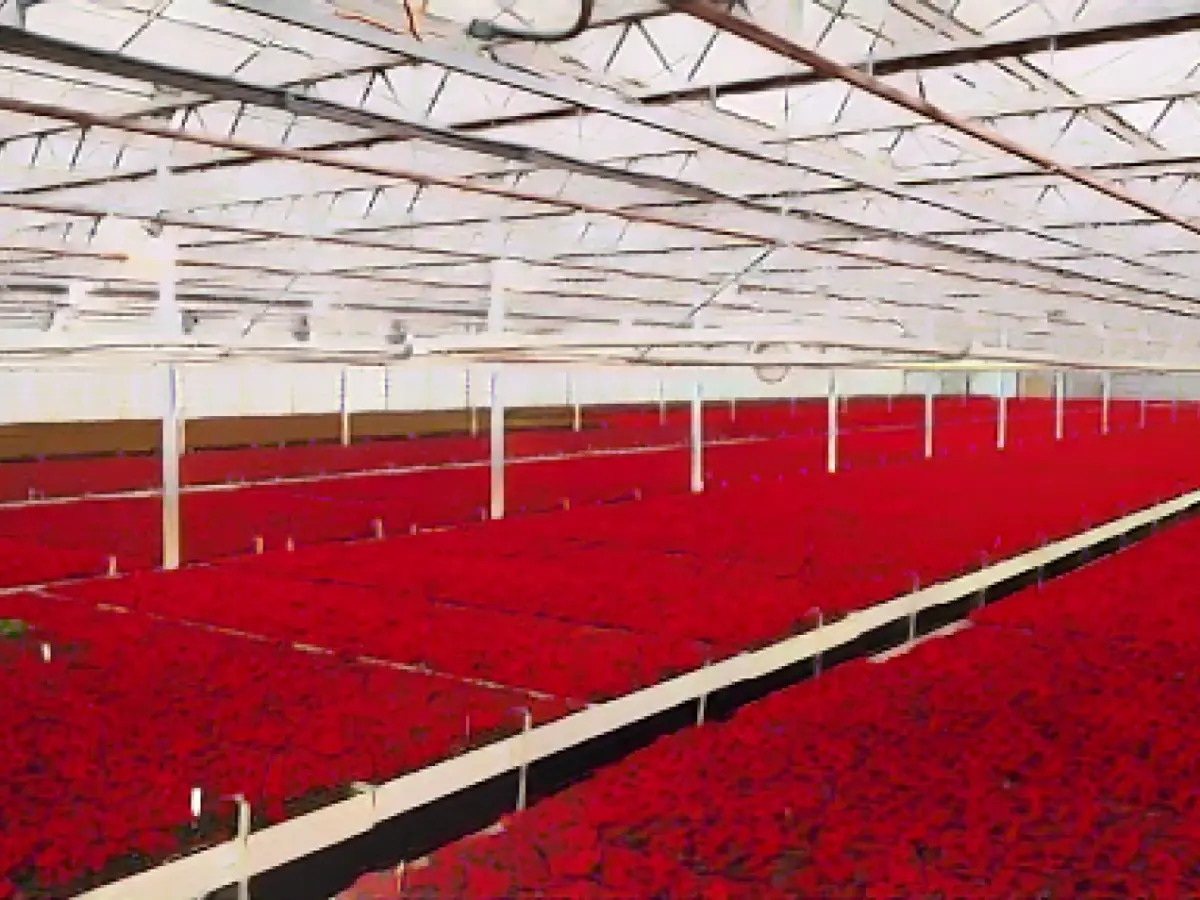In the hustle and bustle of the pre-holiday season, horticultural companies in the northwest of Lower Saxony face a season of high stress. It's the time when they package and distribute millions of vibrant poinsettias, with the weeks leading up to the first Advent being the busiest. Frank Silze, from the Weener, East Frisia based horticultural company, Silze Jungpflanzen, is one such individual. Alongside his brother, Silze's operation churns out around two million finished poinsettias and five million young plants, utilizing roughly five hectares of greenhouse space.
Lower Saxony's Weser-Ems region, as per the Wirtschaftsverband Gartenbau Norddeutschland, is renowned as the epicenter of poinsettia production in the region. According to recent data from the State Statistical Office, an astounding 6.4 million of these holiday staples were cultivated in 2021. A significant 90% of these came from the Weser-Ems region. In the nationwide sales, poinsettias claimed 20.4 million units, with a substantial 30% coming from lower Saxony.
Dehne Topfpflanzen GmbH, another horticultural company based in Wiesmoor, East Frisia, reported a steady demand for poinsettias this year, much alike to their previous years’ experience. They produce approximately 300,000 poinsettias annually. There's slightly less enthusiasm for unconventional shapes, as noted by Dehne Topfpflanzen, but a striking oversupply of standard sizes. Red remains the preferred color, as agreed upon by both the Silze horticultural company and the horticultural association.
Emerging from tropic forests of Central and South America, poinsettias undergo a transformation from cuttings in summer. "These cuttings typically hail from Africa," commented Silze, while highlighting that poinsettias are known as short-day plants. Horticultural businesses rely upon controlled light incidences to cultivate poinsettia plants, which blossom with color only when they experience less than twelve hours of light. The plants' coloring processes are influenced by the sales period, which dictates whether they are left in the dark or bathed in light.
Poinsettia sales commence in late October, with food retailers and DIY stores slightly ahead of specialist retailers. The most significant sales spike occurs in the last few weeks before Christmas. Claims from the Wirtschaftsverband Gartenbau Norddeutschland highlight deliveries to Portugal, Ireland, Italy, Spain, Eastern Europe, Scandinavia, and Benelux for the Silze horticultural company every week.
If you’re keen to indulge in your festive poinsettia for a longer stretch, ensure it is placed in a well-lit area, and mind the temperature while transporting it from the store. "Poinsettias are quite particular about temperature," confirms Silze. A climate of 16 to 18 degrees Celsius is ideal for these plants, avoiding the chill that they are not too fond of.
Interestingly, Germany's poinsettia population, once thriving in households, was overtaken by orchids as the preferred potted plants. Originally indigenous to the tropical forests of Central and South America, these plants hold rich cultural significance even today. By combining modern cultivation methods, they now offer a reliable source of cheer during the holiday season.








